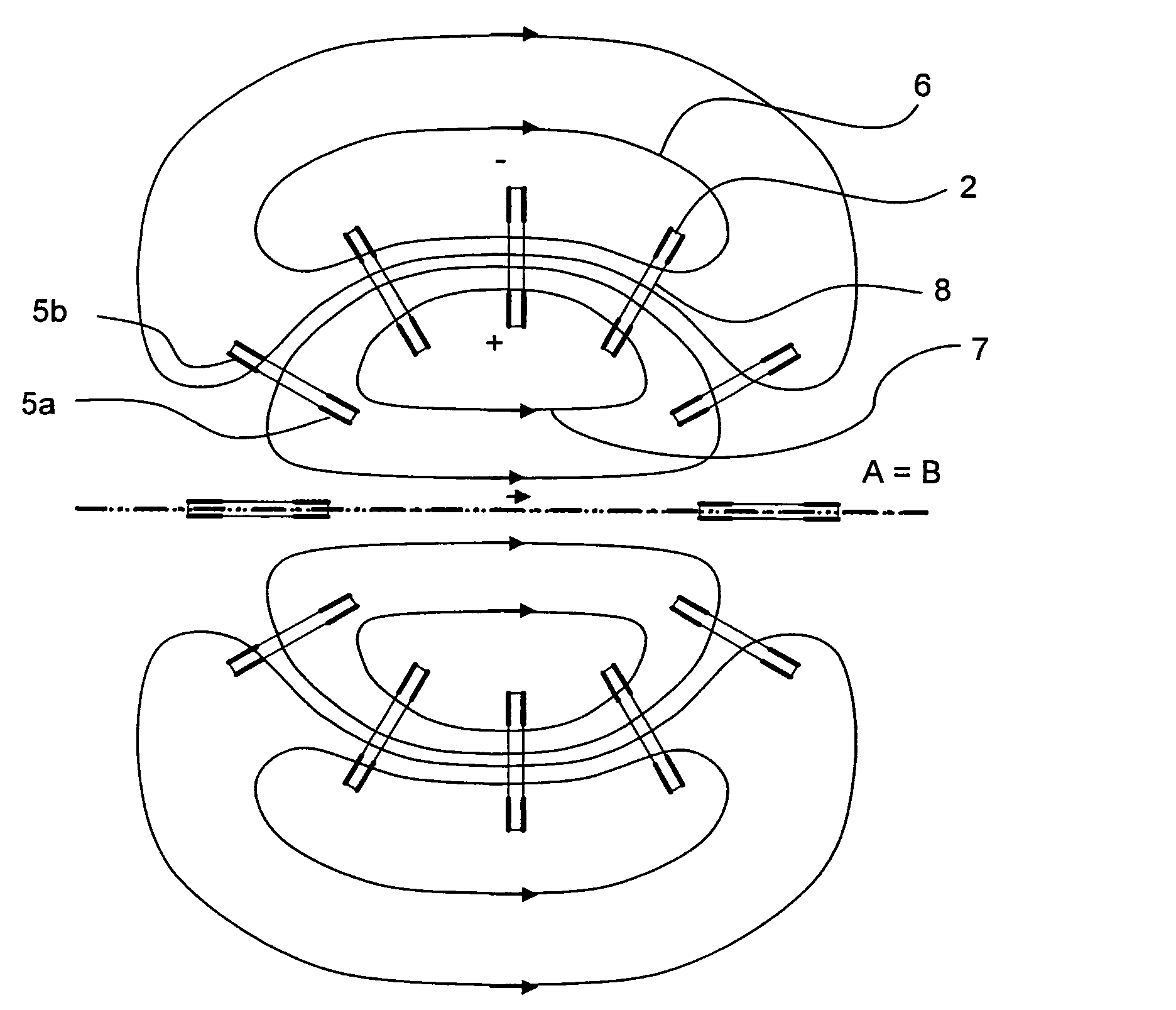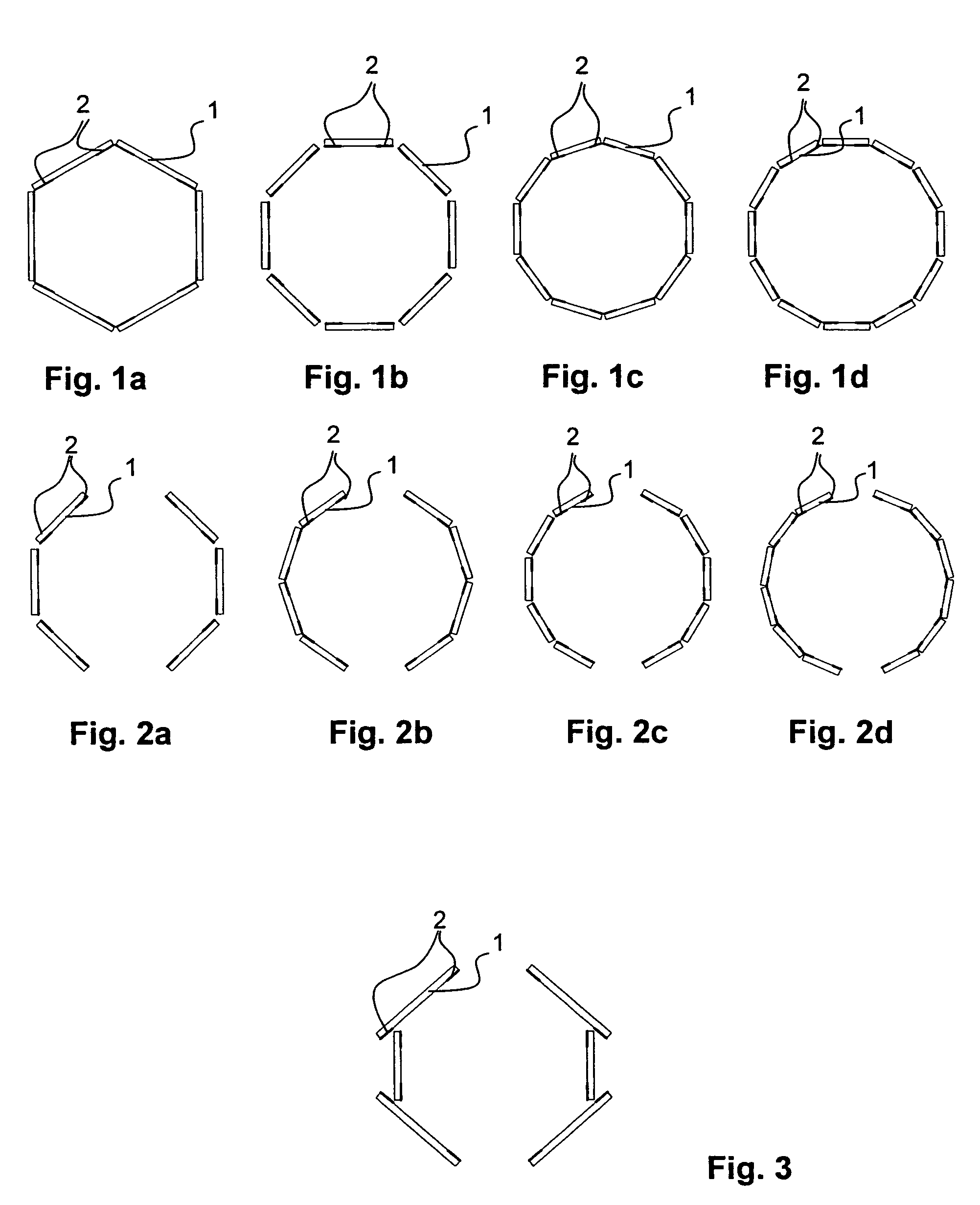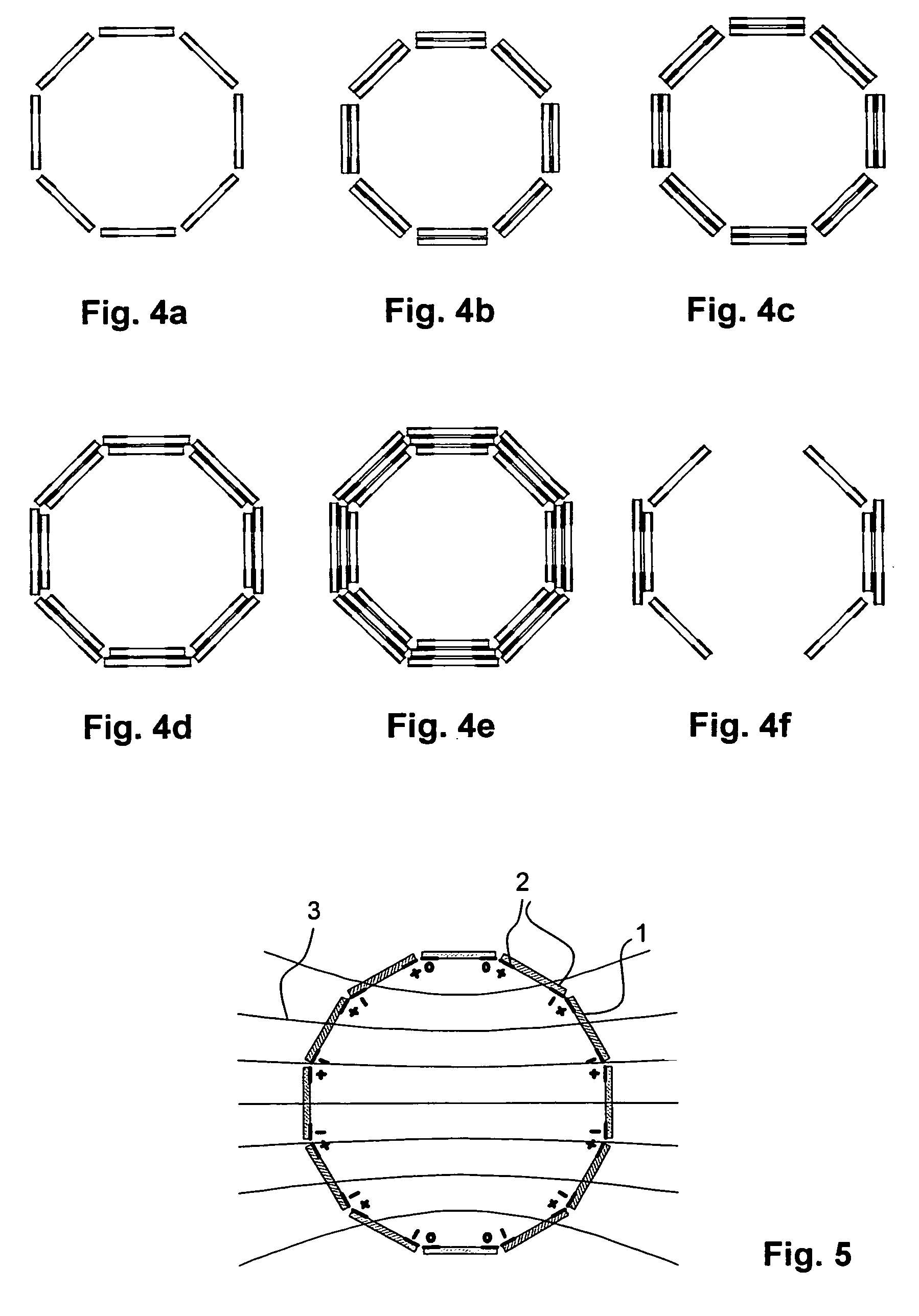Resonator system
a technology of resonance system and resonator, which is applied in the field of resonance system, can solve the problems of limiting the possible geometric design, preventing or complicating the short pulse width, and limiting the possibility of geometric design, so as to achieve the effect of reducing the loss, reducing the cost, and high quality factor
- Summary
- Abstract
- Description
- Claims
- Application Information
AI Technical Summary
Benefits of technology
Problems solved by technology
Method used
Image
Examples
Embodiment Construction
[0069]FIGS. 1a–d and FIGS. 2a–d show sections of different embodiments of an inventive resonator system parallel to the xy plane. N=4(i+1) individual resonators 2 disposed onto planar substrates 1 (FIGS. 1b, d and FIGS. 2b, d) are preferably symmetrically disposed about a sample. A number of N=2(i−2) individual resonators 2 is also reasonable for linearly polarized coils.
[0070]FIGS. 1a–d show resonator systems, wherein the individual resonators 2 are disposed on the surfaces of a polyhedron. The illustrated embodiments have an N-fold rotational and planar symmetry and are more suited for circularly polarized coils (quadrature emission and detection), whereas the embodiments shown in FIG. 2 merely show a 2-fold rotational and planar symmetry and are therefore only suited for linearly polarized coils.
[0071]As shown in the example of FIG. 3, the size of the individual resonators 2 must not be identical. It is however useful to respect at least one, optimally both symmetry planes of the...
PUM
 Login to View More
Login to View More Abstract
Description
Claims
Application Information
 Login to View More
Login to View More - R&D
- Intellectual Property
- Life Sciences
- Materials
- Tech Scout
- Unparalleled Data Quality
- Higher Quality Content
- 60% Fewer Hallucinations
Browse by: Latest US Patents, China's latest patents, Technical Efficacy Thesaurus, Application Domain, Technology Topic, Popular Technical Reports.
© 2025 PatSnap. All rights reserved.Legal|Privacy policy|Modern Slavery Act Transparency Statement|Sitemap|About US| Contact US: help@patsnap.com



